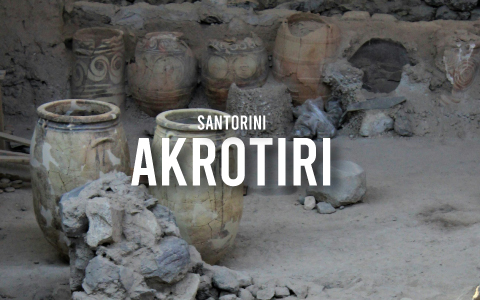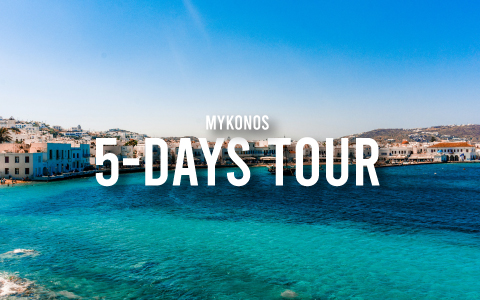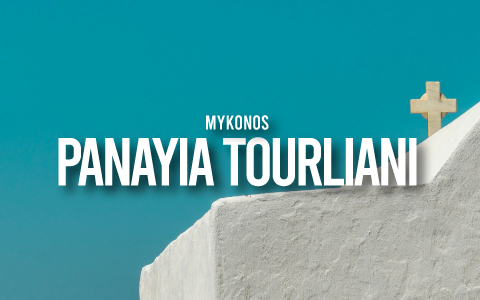
Akrotiri, the Lost Minoan City of Santorini
Santorini is the quintessence of Greece, with its white-washed villages overlooking a blue sea. Compared to other islands like Mykonos or Crete, the views of Santorini have something extra to offer: the remains of a volcanic caldera. And it is this ancient volcano that gives rise to an archaeological site worth visiting during a stay on the island. We are talking about Akrotiri.
What is Akrotiri?
Akrotiri is the remains of an ancient Minoan city that, like Pompeii and Herculaneum in Italy, was buried by a volcanic eruption approximately 3,600 years ago. Just like them, it is considered one of the most important archaeological discoveries of the 20th century, which happened during the construction of the Suez Canal, when workers at the pumice quarries in Santorini stumbled upon ancient relics. At the time, little importance was given to this discovery, and only in the 1960s did systematic excavations begin. What was uncovered was magnificent: well-preserved buildings, vibrant frescoes, and objects that narrate the story of a thriving Bronze Age trading town.
What to see at Akrotiri
The city was literally frozen at the time of the eruption, and its remains today offer an accurate picture of life back then, as the volcanic ash perfectly preserved the buildings and objects. In other words, visiting Akrotiri is like taking a trip back in time. Here’s what to see:
The advanced urban planning of the city
One of the first things that strike visitors is the level of urban development achieved by Akrotiri. The site features well-planned streets, multi-story buildings, and an advanced drainage system. This organization is a testament to the inhabitants’ skill in creating a functional and advanced city for its time. Walking among the ruins is like taking a journey back in time, admiring the architectural skill of a flourishing civilization.
The frescoes
The frescoes of Akrotiri are some of the site’s most famous relics, known for their vibrant colors and diverse themes. Among the most well-known are:
- The Fleet Frieze, which depicts scenes of marine and city life, providing valuable details about the culture and trade of the time.
- The Boxers Fresco, depicting two young men engaged in a sporting competition, symbolizing the importance of sport in Minoan society.
- The Blue Monkeys, a work that surprises with its depiction of exotic animals, revealing cultural and commercial contacts with other civilizations.
The artifacts and the Archaeological Museum of Thira
In addition to the frescoes, the site has yielded a wide variety of artifacts, including pottery, household tools, and instruments. These objects testify to the high level of craftsmanship and the daily lives of the inhabitants. Many of these artifacts are preserved in the Archaeological Museum of Thira, which represents a complementary stop to deepen the history of Akrotiri.
The Akrotiri Lighthouse
Located at the southwestern tip of the island, the Akrotiri Lighthouse is an ideal place to enjoy panoramic views of the caldera and the Aegean Sea. This spot is particularly stunning at sunset when the sky is filled with warm colors, and the island reveals its full beauty.
The nearby Red Beach
After visiting the archaeological site, you can head to the nearby Red Beach, one of Santorini’s most famous colorful beaches. The beach is characterized by red volcanic sand and towering cliffs, creating a unique and spectacular scene.
Useful tips for an unforgettable visit:
- How to get to Akrotiri: You can reach Akrotiri in various ways, such as by joining organized tours, which often include other Santorini attractions. If you prefer to travel independently, you can take one of the frequent buses that connect Fira and Oia to Akrotiri. Alternatively, you can take a taxi or rent a car.
- Wear comfortable shoes: The excavations are extensive, and you’ll need to walk a lot. Also, bring a hat, sunglasses, and sunscreen, especially in the summer months.
- Plan your visit in advance: During peak season, queues can be long, so it’s best to buy your entrance ticket ahead of time. Akrotiri can be visited year-round, but spring and autumn are the most pleasant, with mild temperatures and fewer crowds. We recommend spending at least 2-3 hours at the site, but if you’re passionate about archaeology, you may want to spend more time.
- Hire a guide: It will help you fully appreciate the history and significance of what you’re seeing.
Other places to see in Santorini
In addition to Akrotiri, Santorini offers many other attractions. Oia is the island’s most famous village, with its characteristic white buildings and breathtaking views of the volcano. Fira, the island’s capital, offers shops, restaurants, and a vibrant nightlife. The volcano caldera is an attraction that can be explored on a boat tour, and it is also home to hot springs where you can relax. Finally, there is an abundance of beaches for every taste. Among these, the black beaches of Perissa and Kamari are among the most beautiful.



